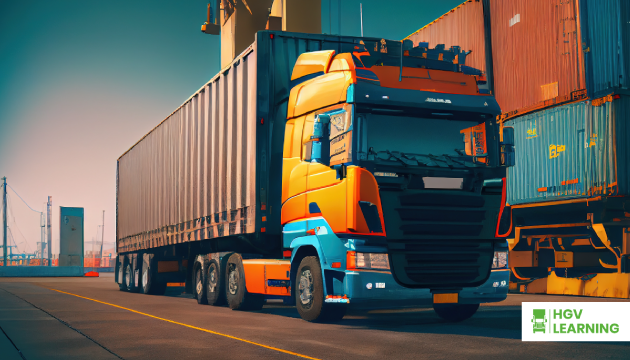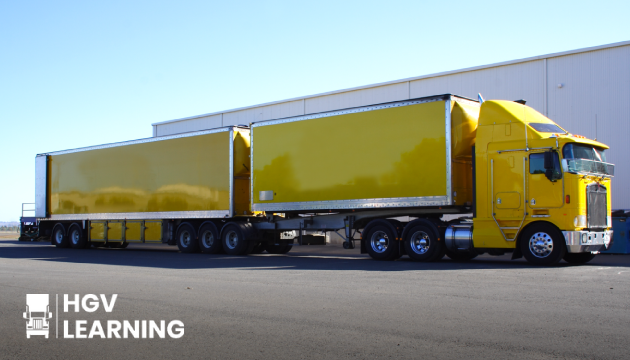Related Articles

28/10/2025
Preventing HGV Overloading: Legal Limits and On-the-Road Consequences

21/10/2025

Understanding HGV load distribution is vital for both road safety and efficient driving. Poorly balanced loads can lead to handling problems, vehicle damage and even accidents. Whether you’re new to HGV driving or looking to refresh your knowledge, learning how to distribute cargo correctly ensures your vehicle remains stable, legal and fuel-efficient.
In this guide, we cover the essentials of HGV load distribution, offer tips for safe loading practices, and explain how a well-balanced vehicle improves day-to-day operations.
HGV load distribution refers to how weight is arranged across the vehicle, including the axles, trailer and chassis. The goal is to ensure that no single part of the lorry is overloaded, as this affects handling and braking. The load must also remain secure throughout the journey, with minimal risk of shifting.
Key aspects of load distribution include:
Failing to follow correct distribution practices can result in fines, increased wear on vehicle components, and reduced driver control. Poor loading also increases the chances of roadside checks and enforcement by the DVSA, potentially delaying deliveries and damaging customer trust.
Correct HGV load distribution supports three key areas: safety, legal compliance, and operational efficiency.
An uneven or top-heavy load can affect steering, increase stopping distances, and raise the risk of rollovers. Proper distribution helps the driver maintain control in all conditions, especially when cornering or braking suddenly.
It also improves traction, allowing tyres to grip the road evenly. In wet or windy conditions, this becomes even more important for articulated or high-sided vehicles.
UK law sets strict axle weight limits. Exceeding these can lead to penalties, roadside prohibitions or even court summons. Vehicles must also comply with load securing standards outlined in the DVSA Load Security Guidance.
If your vehicle is found to be overweight or poorly loaded, both the driver and the operator can be held accountable. Knowing the rules around HGV load distribution is a core part of professional driving responsibilities.
Balanced loads reduce strain on the engine, suspension and tyres. This not only lowers fuel consumption but also helps extend the life of your vehicle. Smooth, controlled driving is easier with even weight across the vehicle.
Improved efficiency also contributes to better delivery performance. When a driver doesn’t need to constantly adjust for handling issues, journey times become more predictable and less tiring.
Here are some simple but effective ways to improve HGV load distribution:
Drivers should also conduct a full walk-around check before setting off. Load shift during transit is one of the main causes of HGV instability. Rechecking straps after braking sharply or opening trailer doors mid-route is also good practice.
Modern logistics fleets often use tools to help manage HGV load distribution. These include:
These tools not only improve safety but also reduce guesswork for warehouse teams. When used effectively, they support quicker loading times and fewer rejected trailers due to non-compliance.
HGV drivers must be aware of their responsibilities when it comes to load safety. During CPC training, drivers are taught how to distribute loads, secure cargo, and identify unsafe conditions.
Operators also have a duty of care to ensure loads are compliant before vehicles leave the depot. This includes regular checks and refresher training for loading teams.
For a detailed overview of CPC responsibilities, read our CPC certification guide. You can also find guidance in our article on digital tachograph rules, which play a role in weight monitoring and driving safety.
If you’re managing loading teams or training new drivers, incorporating HGV load distribution into regular toolbox talks can improve awareness and reduce risk.
Some of the most frequent HGV load distribution mistakes include:
Avoiding these errors requires vigilance, training and routine checks before, during and after the journey. If you’re unsure about your load, ask your depot supervisor to review the distribution with you before departure.
If you’re new to the industry, load distribution may feel complex at first. However, with consistent practice and support from experienced drivers, it becomes second nature.
Confidence grows with experience. Start with cautious, well-paced loading and build from there. If you understand why certain practices matter, it becomes easier to apply them under pressure.
Understanding HGV load distribution is essential for anyone involved in commercial transport. Whether you’re a driver, loader or fleet manager, applying good load distribution practices reduces risk, improves compliance and helps vehicles perform at their best.
If you’re looking to improve your skills in this area, explore training options with HGV Learning and make safer, smarter loading part of your daily routine.

28/10/2025

21/10/2025
Complete the form below and we’ll contact you asap.

